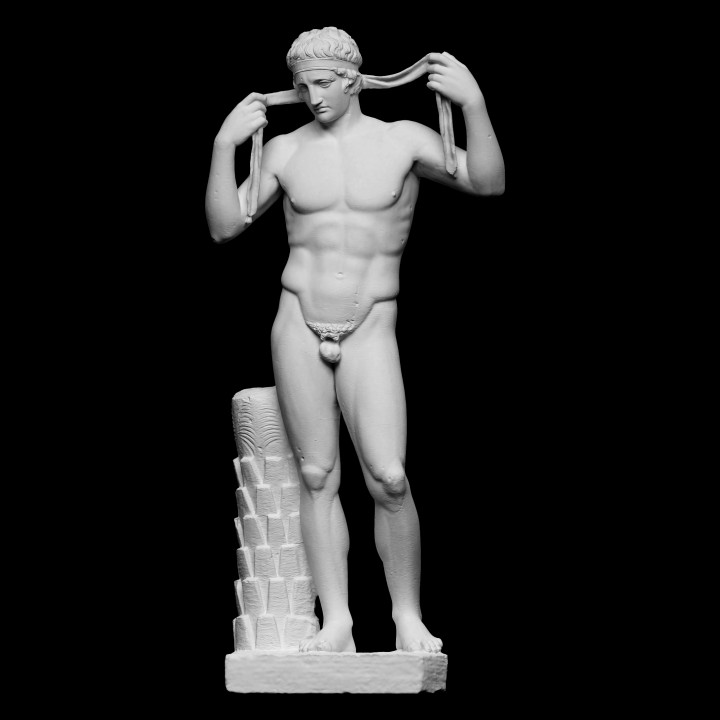
The Farnese Diadumenos
myminifactory
This sculpture was cast from a plaster copy made before 1887, obtained by the Royal Academy of Art in 1896. The original Roman interpretation dates back to the 1st century BC, derived from a lost Greek model crafted around 440 BC during the Severe and Classical period. Several copies of the Diadumenos exist today, with this particular version sourced from the Farnese collection, now housed at The British Museum. As one of Polyclitus' most celebrated figural types, the Diadumenos, along with the Doryphoros, embodies the quintessential Ancient Greek sculpture style – idealized representations of young male athletes rendered in a naturalistic manner. The Diadumenos stands triumphantly as an athletic contest winner, nude and elevating his arms to secure a diadem, a symbol signifying victory, represented by a bronze ribbon in the original circa 420 BC. His stance is marked by contrapposto, with weight shifted onto his right foot, left knee slightly bent, and head inclined toward the right, lost in contemplation. This iconic pose was first attributed to Phidias' statue of an Olympic victor tying a fillet around his head; Polyclitus' successors, Lysippos and Scopas, also created statues of this kind.
With this file you will be able to print The Farnese Diadumenos with your 3D printer. Click on the button and save the file on your computer to work, edit or customize your design. You can also find more 3D designs for printers on The Farnese Diadumenos.
